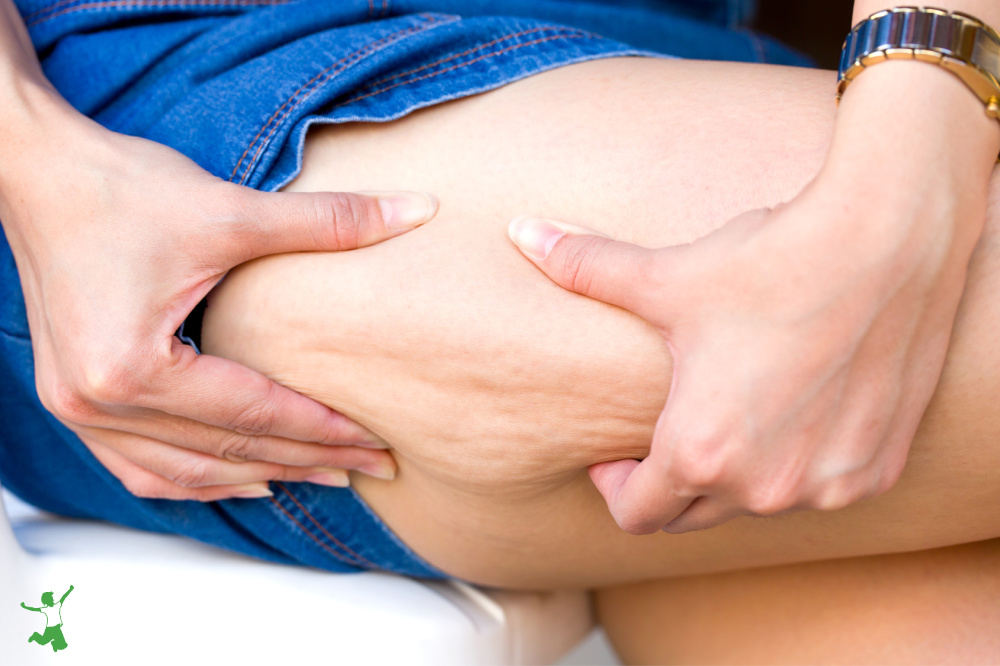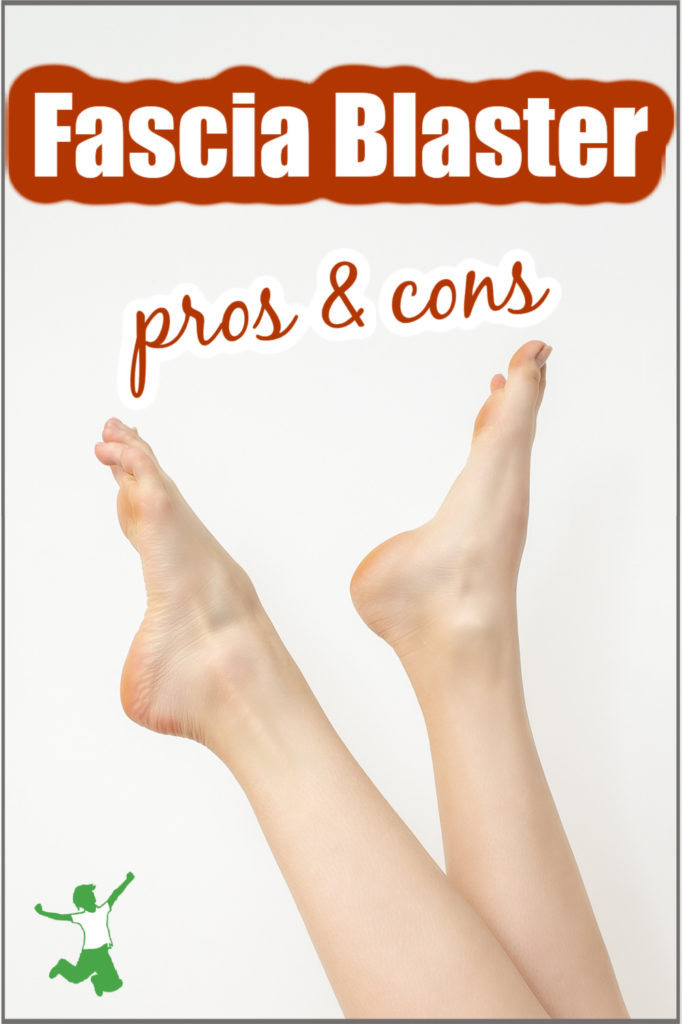Pros and cons of using a fascia blaster and when it has benefits for fitness-related scenarios or dangers for cosmetic use such as reduction in the appearance of cellulite.

In a perfection-obsessed culture of photoshopped models and smartphone apps that banish physical flaws with clever lighting and angles, a wellness product called the fascia blaster fits right in.
Promising to banish jiggly, dimpled cellulite among a host of other claims, these devices represent the modern version of the vibrating exercise belt from the Leave it to Beaver era.
However, while helpful for certain fitness applications, the use of the fascia blaster for cosmetic purposes is another story entirely.
The problem is that no one seems to be telling fans about the potential for unsightly side effects. In fact, using such a device regularly can trigger far worse skin-related issues than cellulite.
What is the Fascia?
In a nutshell, the “fascia” is the spiderweb of tissue that holds your body together. It is very densely woven, covering every muscle, bone, nerve, artery, and vein. The connection with the veins is especially important if you suffer from varicose or spider veins. I explain more about this below.
The internal organs are well protected by the fascia including the heart, lungs, brain, and spinal cord. Most interestingly, there are no breaks in the fascial spiderweb. It is one continuous structure from head to toe without a single interruption. (1)
I like to think of the fascia as a sort of biological yarn, knitted together much like a sweater as a living fabric for the entire body.
How Does a Fascia Blaster Work?
A fascia blaster is a self-utilized device that is specifically designed to work on this aspect of the musculoskeletal system. The manufacturer suggests that regular use can:
- Reduce cellulite
- Lessen pain
- Improve flexibility
- Promote circulation
- Increase joint function
- Enhance physical performance and nerve activity
Did someone say C-E-L-L-U-L-I-T-E?
With marketing claims like this, no wonder these types of devices are selling like crazy. But, like the rapid fat redistribution from lower to upper body that can occur from liposuction, be wary of claims of any cosmetic benefits.
Before examining the harm these devices can cause, however, let’s look at scenarios where a fascia blaster can be helpful.
Fascia Blaster Benefits
I first became familiar with the fascia blaster when I saw a college athlete using one on his injured thigh before an athletic event, probably on the advice of a trainer.
The fascia blaster was vigorously rubbed back and forth across the area apparently to help improve circulation. The hard plastic prongs attached to a sturdy stick about two feet long dig into the tissue, breaking up any fascia adhesions, reducing pain, and assisting with warm-up before competition.
Post-workout or athletic event, some trainers suggest using these types of devices to help heal the area much like a self-administered deep tissue massage or “scraping” used by some physical therapists. The process helps break up lactic acid, release toxins, and bring in blood and oxygen to the area for more rapid healing.
I personally use one to help warm up my hamstrings, quads, and IT band before weightlifting to reduce the chance of injury.
A less intense and mildly stimulating alternative to scraping is dry skin brushing.
But what if there is no injury and a person is not young and fit?
3 Reasons to Skip the Fascia Blaster
I was having a conversation with a practitioner friend recently about what she thought about the fascia blaster. One of her middle-aged clients was using one for cosmetic purposes.
In order to provide an educated opinion, she purchased one to examine it for herself.
She warns about 3 problems from using these devices which most people, unfortunately, find out after damage already occurs.
Cosmetic Improvements Minimal
While a fascia blaster does seem to be helpful for athletes who are fit as described above, for someone who is using it for purely cosmetic reasons, the results are doubtful.
Worse, you can actually harm yourself in the process. According to my practitioner, here are 3 things to watch out for.
Danger of Excessive Bruising
Warning: If you are prone to bruising, the fascia blaster can make you look like the victim of a beating. As a shocking example, I recently saw a woman at the store with extensive bruising all over both arms.
Very concerned, I asked her if she was alright. She rolled her eyes and responded that the bruising was from using a fascia blaster to try and reduce the jiggle!
While easy bruising (and fatigue) can indicate a B12 deficiency, there’s no doubt that some people are more sensitive than others even with an excellent diet.
So watch out! If you bruise easily, the fascia blaster is probably best avoided!
Got Spider Veins? Fascia Blasting is NOT for You
Many develop red, purple or bluish spider veins as they get older. These tiny clusters of blood vessels near the surface of the skin usually appear on the face and/or legs.
The dramatically increased blood flow and weight gain from childbirth, in particular, can cause them to develop on the upper thighs.
Since cellulite most commonly develops in this area as well, women using the fascia blaster may discover that it makes spider veins far worse!
A good massage therapist knows to take great care with areas of the skin containing spider veins. The pressure if too firm can cause the blood vessel clusters to spread. A fascia blaster can do the same thing.
Consider yourself warned!
Making Varicose Veins Worse
While spider veins are an unsightly nuisance and don’t cause pain, varicose veins are another matter!
Varicose veins are blood vessels that have become painfully twisted and enlarged. Blood flow is sluggish in these veins as well. Pregnancy is the typical reason women develop them, but anyone with circulatory issues can be susceptible.
They are not just unsightly. They can be a blood clot risk as well!
My grandmother almost died from deep vein thrombosis (DVT) from a varicose vein. Following her recovery, she used witch hazel extract as an astringent to keep the swelling in check.
Using a fascia blaster in areas where varicose veins are present to improve circulation or reduce their appearance can do much more harm than good. Like spider veins, my practitioner warns that such a product can worsen the severity of the condition!
In summary, if you’ve been thinking of getting a fascia blaster, it is best to consult with your practitioner first. Be sure to rule out any skin or health conditions that might be aggravated by its use.
While beneficial for some physical therapy scenarios, cosmetic benefits are not as certain. In some cases as described above, unsightly or dangerous side effects are possible.









The fascia blaster ruined my body and my health in ways I am still trying to recover from years later. My skin looks much worse than it did before using the blaster (crepe-y and loose), and I have spider veins I never had before starting. I gained weight while using it (that went away when I stopped), and it caused some very strange hormonal problems (that also went away after I stopped). But worst of all I wound up with hives and chronic stomach problems that caused me intense suffering. And I’m still dealing with the stomach issues all these years later. I cannot warn people away from all the blasters strongly enough. I wish I’d never heard of Ashley Black. My life has been considerably worse since I used the fb. Please be gentle with your fascia <3